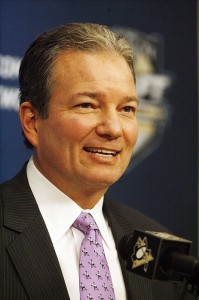
When Ray Shero was hired as the new general manager of the New Jersey Devils, Pittsburgh Penguins fans sighed with relief as one financial obligation was wiped from the team’s books. But as the architect of the Steel City’s 2009 Stanley Cup championship moves across the Metropolitan Division, his legacy as GM has been hard to assess.
Had he mysteriously retired after the 2011 season, Shero could have potentially earned himself a reputation has one of the best general managers in the history of the Penguins and, potentially, in the league. In fact, only a year later he would earn the NHL General Manager of the Year Award.
But the end of his tenure with Pittsburgh muddled the situation significantly, as his decisions have been widely attributed for the failures of the team, then and now. His penchant for aggressively pursuing a “win now” mentality has become a shudder inducing memory for fans who have been forced to see the Penguins struggle with issues of depth the past several seasons.
So which Shero will the Devils be receiving as their GM? That remains to be seen. But when considering the possibilities, it is important to look at the best and the worst decisions made by the man during his first stint as a general manager in the National Hockey League.
The Best
5. Drafted Olli Maatta in the first-round of the 2012 NHL Entry Draft (2012)
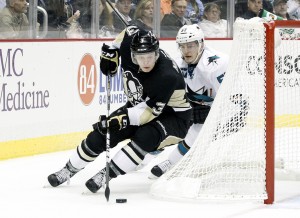
Of the NHL drafts that Ray Shero had to negotiate during his tenure with the Penguins, the 2012 event hosted in Pittsburgh’s Consol Energy Center was by far his strongest. This was in no small part because he selected a sturdy Finnish defenseman proficient in the arts of puck-possession and shot-suppression. And although Olli Maatta has been dealt an atrocious hand of luck in terms of injuries and ailments (cancer, shoulder injuries), he would seem to have already established himself as the defenseman of the team’s future if his health can improve.
During his 2013-2014 rookie campaign, he played in 78 games and managed to score 9 goals and tally 20 assists for a total of 29 points. And although his sophomore season was cut to just 20 games, his weighted advanced metrics indicated that he would have been a force on the blue line had he been able to play. He led all Penguins defensemen in point per 60 minutes of ice time (1.31), assists/60 (1.12), individual assists percentage (40 percent of all goals scored with Maatta on the ice were assisted by him), and individual points percentage (46.7 percent of goals scored while Maatta was on the ice had him on the score sheet in some form).
The Pittsburgh Penguins that were so shockingly dominate to start the 2014-2015 season had a defensive core that was bolstered significantly by the play of Maatta. If he is able to recover fully and continue to play at the level he has shown through his first two seasons (granted one was shortened significantly by injury), then Shero will have to be credited for his selection.
4. Traded Ryan Whitney for Chris Kunitz and Eric Tangradi (2009)
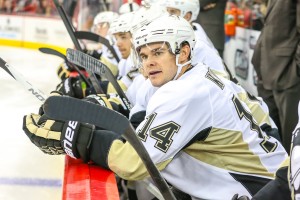
Although the first few months of 2015 were not particularly kind to Chris Kunitz (nine points in 33 games to finish the season, three of which game in one game on February 6), it is important to not forget just how favorable the trade for him was to Pittsburgh. The man for whom he was traded, Ryan Whitney, was a former first-round pick. He was just 26-years-old and had developed a reputation as a highly proficient puck moving defenseman with a reasonable $4 million cap hit. But a chronic foot injury with a slow recovery process worried Shero and so he negotiated to move Whitney for the then-29-year-old Kunitz and then-20 Eric Tangradi.
While the hulking Tangradi never particularly panned out and was eventually traded away to the Winnipeg Jets, Kunitz provided immediate support at the forward position for the Penguins. After moving to Pittsburgh in 2009, he scored 18 points across 20 games in the regular season to help take the team to the postseason before tallying 14 points in the playoffs en route to a Stanley Cup.
Since then, Kunitz has become a fixture of the Penguins’ top-six forwards. He has 319 points is third-most on the team between 2009 and 2015, behind only Sidney Crosby and Evgeni Malkin. In fact, his 63.82 CorsiFor per 60 minutes of ice time is second-highest on the team during the same timespan, behind only Crosby.
He seems to be on the decline after this most recent season, but if he can recapture his scoring touch with a healthy team around him in 2015-2016, Kunitz could finish his time in Pittsburgh on a strong note. But either way, Shero’s move to acquire him was instrumental to the winning of the 2009 Stanley Cup and helped solidify the Penguins’ forward corps.
3. Traded Jordan Staal for Brian Dumoulin, Brandon Sutter, and a first-round draft pick (2012)
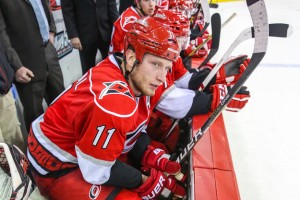
This trade still remains controversial among many Pittsburgh fans. Jordan Staal, the Penguins’ first-round selection in the 2006 draft, was a fan-favorite and provided potent offense with Selke-caliber defense. Shero tried to re-sign him, but Staal reportedly turned down a deal worth 10 years and $60 million. So the GM made the best of his situation and dealt the promising, then-23-year-old center.
In return for sending Staal to play for the Carolina Hurricanes with his brother, Eric, Shero obtained the young defenseman Brian Dumoulin, forward Brandon Sutter, and a first-round selection, eighth overall, in the 2012 NHL Entry Draft, which eventually became Derrick Pouliot.
While Sutter has never come close to matching Staal’s production (46.53 CF/60 versus 65.64 between 2012 and 2015), the addition of two outstanding young defenseman, particularly Pouliot, has given the Penguins potential to form one of the strongest defensive corps in the coming years. Staal was and is a terrific forward, but had he accepted the contract Shero offered him, their salary cap situation could be even more handicapped than it is today and this deal would be on the list of the GM’s worst. Instead, plan B was the right one as Shero was able to keep another hand tying contract off the books and build a reservoir of young defensemen that should be the envy of the league over.
2. Traded Colby Armstrong, Erik Christensen, Angelo Esposito, and 2008 first-round draft pick for Pascal Dupuis and Marian Hossa (2008)
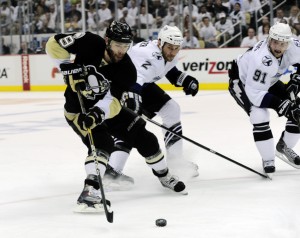
In the move that vaulted Shero to legendary levels of adoration to the Pittsburgh faithful, the success of this trade still leaves many with their jaws on the floor. Before his propensity for trading draft picks became a problem, Shero made this cool, calculated move that ultimately left the Atlanta Thrashers with four duds and robbed them of two of their best forwards, one of whom has become a staple of Pittsburgh hockey.
Marian Hossa was, from the get-go, a rental. But he was an effective rental. He scored 12 goals and had 14 assists for a total of 26 points across 20 playoff games as the Penguins made an impressive playoff run before losing in game 6 of the 2008 Stanley Cup Final. He departed the team after the season in favor of the team that beat him, the Detroit Red Wings, signing a one-year contract worth $7.45 million.
Dupuis, meanwhile, is one of the most beloved and consistent Penguins in recent memory. He helped the team defeat Hossa and the Red Wings in the 2009 Stanley Cup, has accumulated 243 points during his eight years with Pittsburgh, and has signed two contract extensions to stay with the team. He has been a staple of Sidney Crosby’s wing support and, despite an ACL tear and blood clot plaguing his recent seasons, he seems poised to continue into the 2015-2016 season.
For their part, the Thrashers received two mediocre forwards in Armstrong and Christensen, while Esposito and Dalton Leveille, the product of the 2008 first-round pick, have never played a single game in the NHL. To call this trade highway robbery would be like equating the heist from Ocean’s Eleven to shoplifting.
1. Traded Alex Goligoski for James Neal and Matt Niskanen (2011)
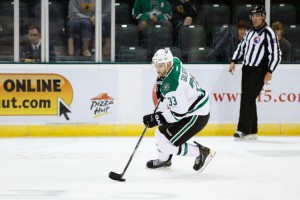
The only reason that the deal with the Thrashers did not reach the top spot was because, as poorly as the Thrashers’ choice panned out, a draft pick was still dealt. In the case of trading Alex Goligoski, Shero was able to dump one defenseman in favor of a better one and a top-six forward with enormous upside. It is the ultimate stunner of Shero’s tenure in Pittsburgh.
Goligoski had just come off a career season in which he scored 37 points in 69 games in the 2009-2010 season. The next season, when he was traded, saw the numbers jump up to 46 points across 83 games. It was a deal that the Stars seemed eager to make, as they were excited to add an offensive blueliner.
But in terms of defense, Niskanen was a significant improvement. In the years since this deal was completed, Goligoski has managed to post a CA/60 of 54.14, while Niskanen has posted a CA/60 of 49.89. Granted Niskanen has since moved on, but even in 2013-2014, when he was last with Pittsburgh, his numbers were head and shoulders above those of Goligoski.
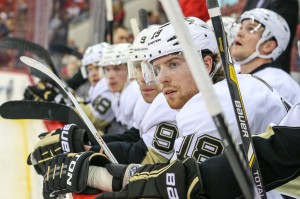
But the addition of James Neal is what made this deal extraordinary. At the time of the trade, he had already earned three 20-goal seasons. In his first full season with Pittsburgh, he scored 40 goals and earned 41 assists for a career-high 81 points. Even though Neal has since been dealt to Nashville, he still has never managed to score less than 20 goals in a season.
Furthermore, his 65.62 CF/60 between 2011 and 2015 is good enough for ninth among forwards who have played more than 1,000 minutes over the past four seasons. During his final season with Pittsburgh, Neal led the team was CF/60 of 63.92. His lethal scoring touch and ability to launch pucks at the net was more than worth the contract of Alex Goligoski.
Without dropping a single draft pick or a player who has gone on to do spectacular things, Shero added two players who lifted his team’s abilities on both sides of the ice. It was an acquisition that almost unquestionably stands as the best of Shero’s body of work as a general manager in the NHL.
The Worst
5. Traded 2010 second-round draft pick for Jordan Leopold (2010)
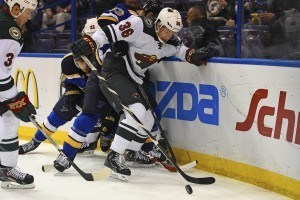
Just as some undoubtedly believe that some of Shero’s moves were better than others, some will position some of his worst above others. To this writer, the acquisition of Jordan Leopold was an early blunder that showed signs of what was to come from Shero: overpaying for players with draft picks.
Jordan Leopold is a journeyman defenseman, who has played for eight different teams over the course of 12 seasons in the NHL. His play was mediocre at his peak and has been on the decline for a significant amount of time. During the 2009-2010 season in which the Penguins acquired him, his CA/60 of 57.44 was the second-worst among defensemen and the worst for defensemen with more than 1,000 minutes of ice time.
For his services, which totaled a mere 20 regular season games and eight horrible postseason appearances, Shero dealt a second-round draft pick in the 2010 NHL Entry Draft to the Florida Panthers. The Panthers used that pick to acquire the promising center Connor Brickley, who just had a 47 point year in his first full AHL season and helped lead his San Antonio Rampage to their first postseason appearance since 2012. His numbers were good enough for second-best on the team during the regular season.
The Penguins, who have suffered from the poor drafting of forwards, could be greatly benefiting from having a player like Brickley in their organization right now. Hindsight is 20/20, but it is hard to imagine that a few disappointing weeks of Jordan Leopold’s play should ever have been worth a second-round draft choice.
4. Traded 2014 fifth-round draft pick and 2015 third-round draft pick for Marcel Goc (2014)

In his final move as GM of the Pittsburgh Penguins, Ray Shero proved that he had learned nothing as he chose to once again needlessly overpay the Florida Panthers for a player who was, then and now, mediocre at best. The acquisition of Marcel Goc for two draft picks seemed a bit steep at the time, even as Shero tried his best to put a spin job on it for the fans. “I think our goal was to try to increase our depth up front and help our forward group,” he told ESPN, “and I think we’ve done that.”
But now, with Goc having been shipped out to the St. Louis Blues, Shero’s lofty rhetoric has become even easier to see through. Admittedly, Goc posting only eight points across 55 games while contributing next to nothing at the bottom of the team’s lineup probably was not the expectation for even most ardent of critics. But even his advanced metrics point to him being sub-par defensively (career 48.43 CA/60) and mediocre offensively (career 52.29 CF/60).
Again, a dearth of draft picks and forward prospects are two of the primary factors behind the Penguins’ current woes. Trading two draft picks for a middling-at-best forward who had just turned 30 was not the way to make the situation any better.
3. Traded Kenneth Agostino, Ben Hanowski, and 2013 first-round draft pick for Jarome Iginla (2013)
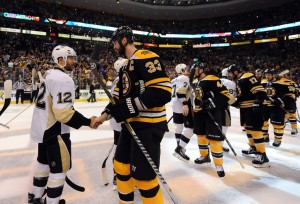
This blockbuster trade for Jarome Iginla was the capstone of Shero’s dramatic push to field a roster that, on paper, had the best shot at the Stanley Cup. But in the process of acquiring the future Hall Of Famer from the Calgary Flames, the GM dealt a hand that, initially, seemed to be well worth the rental. After all, Iginla had scored 1,095 points during his time with Calgary and had proven himself to be an elite power forward in the league. Shero and the Penguins hoped that he could be the high-impact player that could vault them to a second championship in four years.
But during his brief tenure with Pittsburgh, Iginla was a tremendous disappointment. Although he was hardly the only team’s only problem as they were ultimately swept in the Eastern Conference Finals, with their abysmal goaltending taking center stage, he still lacked the impactful play that the franchise expected for such a hefty price.
However, believing that a 35-year-old forward, no matter his prestige, would make such an enormous difference had just been wishful thinking. He certainly looked his age as he lagged behind the Bruins forceful squad throughout all four games. So rather than win another Stanley Cup, Shero made an ill advised deal that resulted in him spending two promising prospects in Kenneth Agostino and Ben Hanowski, as well as a first-round draft pick. In the dreams of the Pittsburgh management and fanbase, Iginla had all the makings of a promising acquisition, but the price that was paid for his unremarkable play makes this one a dud.
2. Traded 2013 second-round draft pick and 2014 second-round draft pick for Douglas Murray (2013)
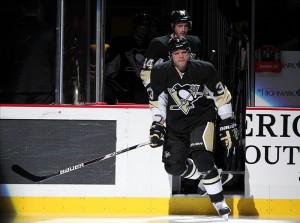
If the San Jose Sharks, a playoff contender at the time, were willing to part with a veteran defenseman like Douglas Murray, should that not have indicated that Douglas Murray was not worth a GM’s time? Apparently, Ray Shero did not realize this as he decided to deal two years worth of second-round draft picks for the rental services of the man affectionally referred to as “Crankshaft.”
When looking to bolster a defense, it is likely not advised that you acquire a player who was on track to post a CA/60 of 64.56, which is the worst mark for any defensemen on the 2012-2013 Pittsburgh Penguins. But this is exactly what Shero did. And it was not as if Murray’s performance was a fluke. His play had been on the decline for some time and he would ultimately only last one more year in the NHL.
Robyn Regehr, another veteran defenseman who was dealt to the Los Angeles Kings by the Buffalo Sabres at the same time for a remarkably similar price (two second-rounders, one in 2014 and one in 2015), proved to be a much more effective and reliable presence on the blue line. His experience and play actually earned him a two-year, $6 million extension that allowed him to eventually win a Stanley Cup with Los Angeles.
Shero missed out on Regehr and decided to shoot from the hip by adding Murray to his roster. Suffice to say that he proved that he could not hit the broad side of a barn.
1. Signed Rob Scuderi to a four-year contract worth $3.375 million per season (2013)

This move would likely, or at least would hopefully, keep Shero awake at night if he were still the GM of the Penguins. This is a contract so inexplicably terrible that has seemed to anger many of the team’s fans from the moment it was signed.
Rob Scuderi was 34-years-old when he signed his current four-year deal, worth $3.375 million per season. By the time the contract is set to expire, following the 2016-2017 season, he will be 38. He provides spotty defense, at best, with his poor puck possession skills and slow pace of play becoming glaring problems during the team’s early exit from the playoffs this season.
Why would Shero do this? Loyalty. This is what makes Shero such a tough person to dislike for his managerial decisions. After Scuderi had helped win Pittsburgh a Stanley Cup, Shero had let him walk. But when the defenseman was available again, Shero felt a certain kinship with the former player and added him to the roster.
This type of behavior had its moments, such as when he signed acclaimed defenseman Zbynek Michalek to a five-year, $20 million contract and then traded him back to the then-Phoenix Coyotes only two seasons later because Michalek was happier there. The Penguins received a third-round draft choice and pair of prospects in return for their kindness.
Unfortunately, the signing of Scuderi has not panned out so well. He has been atrocious, with his play only masked on occasion by those around him. At this point, it would seem that a buyout of Scuderi’s contract is the best option. When paying a player over a million dollars to not be on the roster seems like a great alternative, it was a bad deal.
The New Jersey Devils can only hope that such a deal is never made while Shero mans their ship.